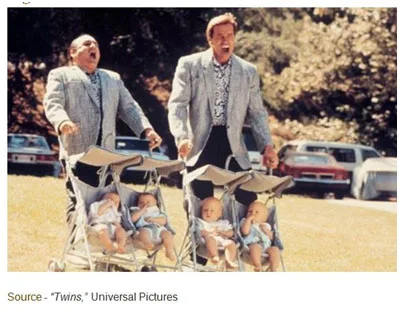Understand Who You Are, Not Just What You Make
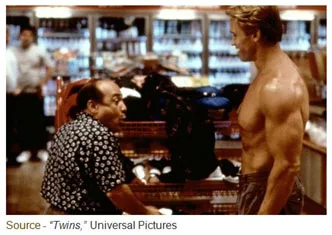
A while back, I said I wouldn’t want to be Tim Cook and take the helm of Apple. You know, all the comparisons and second guessing.
I was wrong!
The way the industry is going, I wouldn’t want to head up any company that makes stuff that competes with Apple’s stuff.
People scream/brag about their Apple-like whatever.
Companies allow Everyone to compare you with what Apple did:
- It’s better, worse, not as good as, not sold like Apple’s thingie
- It doesn’t have the features, has too many
- Your price is too high, profits too low
- Your roll-out was too dull, too expensive, too low key, too…
Engineering and marketing folks spend way too much time thinking about Apple, what they’re doing/going to do instead of thinking about what their company is doing/going to do!
That’s called following!
So far this year, we’ve had CES (Consumer Electronics Show), MWC (Mobile World Congress), GDC (Game Developer Conference), Geneva Auto Show and NAB (National Association of Broadcasters).
Apple didn’t exhibit at any of them.
Still, companies, analysts, the media:
- Talk about what they’re doing, not doing, when they’re going to do it, how they’re going to do it
- Compare whatever is being done, being displayed with Apple’s whatever
- Discuss how their product enhances, disrupts your use/your Apple-based life
 Who You Are – Companies spend so much time, effort and money focusing on the next new product and moving to the next great idea. They forget that consumers are people; and even in our digital world, they like to/want to/need to identify with people. Companies that understand their DNA – where they’re from and what they stand for – give customers (B2B, B2C) a foundation for a relationship.
Who You Are – Companies spend so much time, effort and money focusing on the next new product and moving to the next great idea. They forget that consumers are people; and even in our digital world, they like to/want to/need to identify with people. Companies that understand their DNA – where they’re from and what they stand for – give customers (B2B, B2C) a foundation for a relationship.
Apple gets all of the free attention, coverage.
Everyone else pays for it!
Apple – and a few other firms – focus on their DNA – who they are, where they came from, where they are going, how they’re going to get there – so everyone can wrap their head around the company and their products.
Every day, they come to work determined to be different things to different people.
If the company doesn’t understand its DNA, then how can anyone else?
Why should people – customers, partners, shareholders – care, why should they bother?
Apple products do pretty well in their major product categories – computers, tablets, smartphones, wearables – and they are slowly broadening what they are going to be when they grow up.
But the real marketshare leader is Other.
Ironic isn’t it, no one compares their new stuff to or pays attention to Other?
They get no attention because they put together new images of themselves with each new CEO, CMO, team, agency, product, season.
Except for a brief interruption, Apple’s focus has been on developing, tweaking, refining, improving Macs, iEverythings, Apple Thingies!
Yes, they’re shifting and broadening, but they base their new strategies on their DNA.
Or, as Julius Benedict put it, “The second rule in the crisis situation.”
A DNA focus is what:
- Gets the people up in the morning
- Stimulates them to design/develop/deliver things that work (for the most part)
- Encourages the seven billion plus people on the planet to lust for, hate, want to have a piece of, want to beat them and their shared vision
Followers change clothes and … follow.
Folks point out that computers are dying, tablets are fading, smartphones are reaching saturation, and wearables are stumbling.
The only thing to do is something new!
 Timing is Off – Marketers tend to forget that there is a huge difference in time between Geoffrey Moore’s Crossing the Chasm (top) and Gartner’s hype cycle. Marketing and other promotion folks “lose interest” in products once they’ve peaked on the cycle; but that’s just when consumers are beginning to buy the products, services, technology. Consumer aren’t dumb, they just likes to get the maximum from their purchases.
Timing is Off – Marketers tend to forget that there is a huge difference in time between Geoffrey Moore’s Crossing the Chasm (top) and Gartner’s hype cycle. Marketing and other promotion folks “lose interest” in products once they’ve peaked on the cycle; but that’s just when consumers are beginning to buy the products, services, technology. Consumer aren’t dumb, they just likes to get the maximum from their purchases.
But there’s a huge difference between innovation adoption and hype cycles.
Perhaps that’s why Apple has $178B sitting in cash!
Most consumers – professionals and digital natives – buy new solutions more slowly and tend to use them longer than most companies would like.
Most people buy products/solutions that meet their needs longer than the next SKU (stock keeping unit) refresh.
And surprise!
They usually make their decisions based on WOM (word of mouth) recommendations.
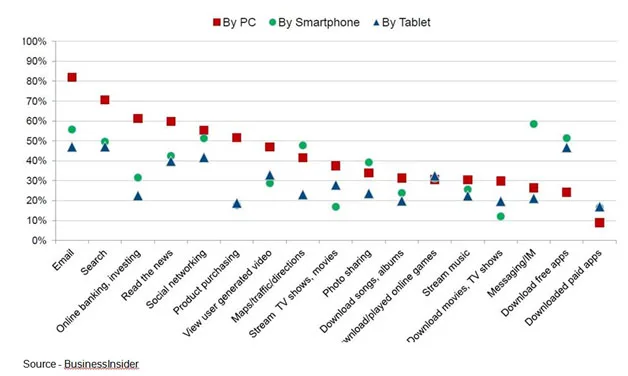 Multiple Devices, Uses – While multi-usage devices are introduced, people continue to use computers, smartphones, tablets and soon wearables for different tasks. Consumers understand the reasons for buying a Swiss knife communications tool but even digital natives have different devices they carry with them and use.
Multiple Devices, Uses – While multi-usage devices are introduced, people continue to use computers, smartphones, tablets and soon wearables for different tasks. Consumers understand the reasons for buying a Swiss knife communications tool but even digital natives have different devices they carry with them and use.
And they use multiple devices.
People still purchase computers because they’re the preferred device for many applications. Which may be why Macs enjoyed a 30 percent sales increase?
People just don’t replace computers today, so overall sales are off. Instead, they make modest investments to improve their systems – adding memory, moving up to SSD, getting cases/covers – and extend the life/performance.
The rest of their device budget first went for a sleek, multipurpose smartphone. The small screened wonder was going to cannibalize larger device sales.
However many experts feel Mac sales grew because of consumers’ experience with their iPhones. People liked the phone and the way it just worked (for the most part).
They liked the DNA behind the device so when they wanted to replace their aging computer or wanted to use a sleek tablet for video games, movies and work; they turned to the people who promised cross-device continuity.
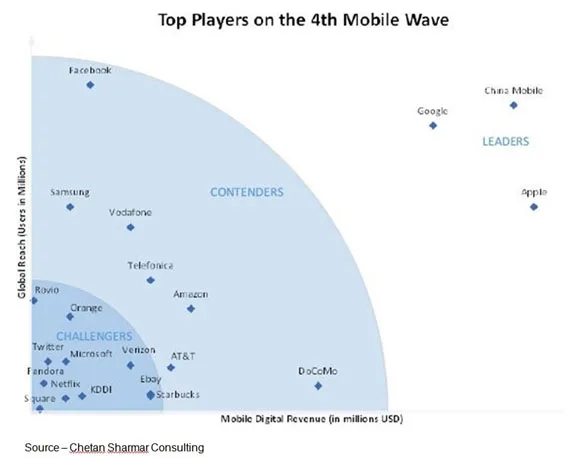 Positioned Leaders – Every organization today is focused on delivering the next great thing in mobile communications, doing it their way to set themselves apart from the competition. Only a few are well positioned to handle the future.
Positioned Leaders – Every organization today is focused on delivering the next great thing in mobile communications, doing it their way to set themselves apart from the competition. Only a few are well positioned to handle the future.
After all, WOM informed them that Apple was one of the leaders in the 4th generation mobile wave.
Strategy Analytics noted that Apple OS tablets have slipped to 15M units last year, compared to 35M Android-based tablets.
What they don’t point out is:
- There are maybe 100 different Android tablet manufacturers and most folks can only name one or two
- They aren’t really Android tablets, they’re Samsung, Amazon, Asus, Lenovo, whomever tablets
- The same apps are available on both libraries but most of the action is on the iPad, according to eMarketer
At MWC, everyone was out to do in the iPhone with a better smartphone … thinner, more curved, tougher, more open/closed, cheaper.
Julius Benedict looked at them all and said, “If you’re lying to me, I’ll be back!”
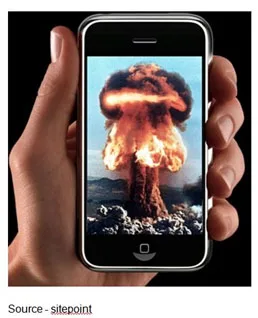 The Killer Device – While the iPhone is the smartphone leader in terms of image, it isn’t the leader in total unit sales. Still, all of the folks who displayed at MWC focused their attention on being the iPhone killer rather than on what made them special and unique in the mobile device category.
The Killer Device – While the iPhone is the smartphone leader in terms of image, it isn’t the leader in total unit sales. Still, all of the folks who displayed at MWC focused their attention on being the iPhone killer rather than on what made them special and unique in the mobile device category.
Still, according to Gartner, Apple sold nearly 75M units in the 4th quarter while Samsung sold about 73M with a lower profit margin.
But the big gorilla in the room is China Mobile.
They have the inside track to 1B plus people who may lust for products with Apple’s DNA but have to settle for a Xiaomi, Huawei or any of the cheap knock-off no names.
Now we’re entering the next phase, wearables.
People are trying real hard to figure out (justify) why they need something like a 10 grand Apple watch. But watches are just show ‘n tell bling, the opening salvo.
Wearables will open up new opportunities in fitness/healthcare, glass/goggle, gaming, clothing, payments, implants and apps by the gazillion.
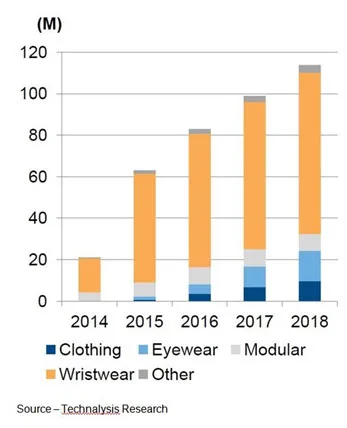 Beginning of IoT – Wearables are on the leading edge of the hype cycle, promising the best of all worlds. However, the category isn’t just one market, it’s multiple markets focused on applications and user commitments – clothing, eyewear, modular, wristwear, healthcare, financial, general business and more. It will take hundreds of false starts until firms begin having their devices work with other devices/systems before the market will grow and mature.
Beginning of IoT – Wearables are on the leading edge of the hype cycle, promising the best of all worlds. However, the category isn’t just one market, it’s multiple markets focused on applications and user commitments – clothing, eyewear, modular, wristwear, healthcare, financial, general business and more. It will take hundreds of false starts until firms begin having their devices work with other devices/systems before the market will grow and mature.
It’s an opportunity for firm(s) to come to grips with their DNA and make the IoT (Internet of Things) and IoE (Internet of Everything) not just another new product/service but their foundation, their path to tomorrow.
This will be the challenge for Apple’s DNA because they have to show that they believe in the broader world of products, applications, devices and things.
Their fantastic walled garden will have to bring others in.
They may already be moving in that direction:
- The enterprise relationship with IBM is bending the rules to put devices and apps into businesses around the globe
- They are allowing people other than uses to work with, test a pre-release version of their OS
- They are working with healthcare agencies, governments, majap (major appliance), card firms, banks, transportation firms, others to develop safe, secure solutions for their needs that work with other solutions
Yes, there are some very good “others” that speak from/stay focused on their DNA every day, rather than focusing on how their thing is better than the other guy’s/gal’s thing.
As Julius Benedict said, “If you choose to bluff, you must be prepared to have your bluff called.”
Following the lead/steps of another company won’t produce a perfect clone.
Instead, as Vincent Benedict said, “Instead of just one perfect kid, Mom had the two of us.”
# # #
